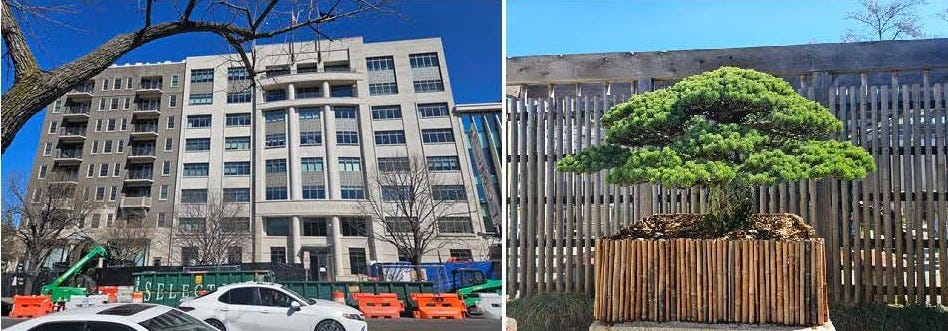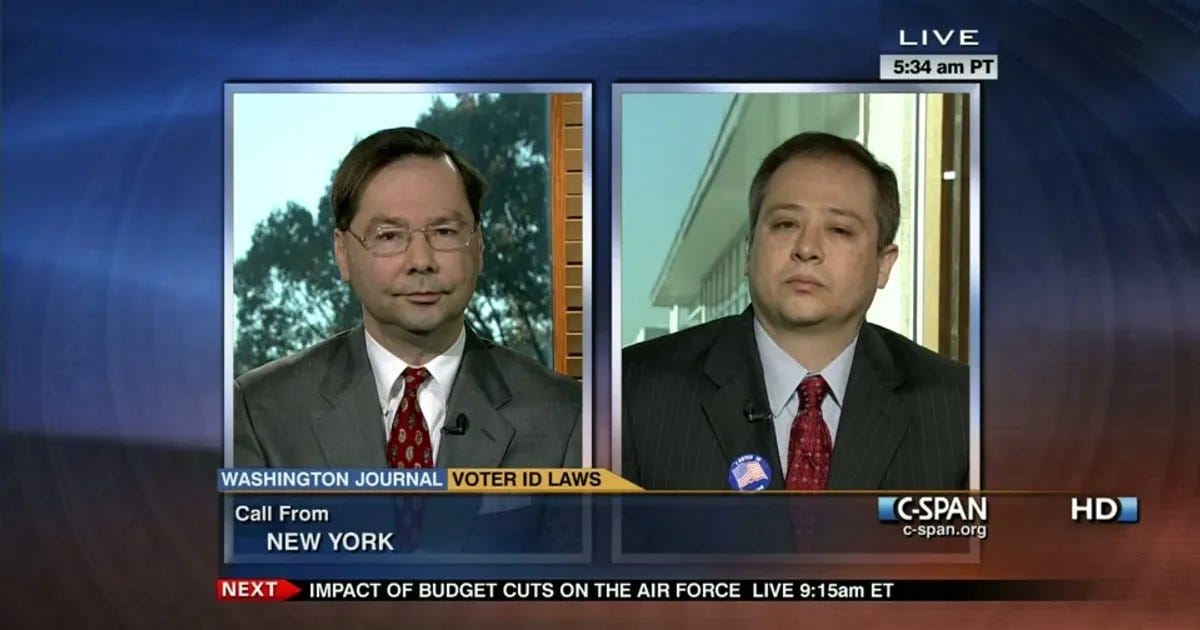A few Saturdays ago, my son and I were driving on Pennsylvania Avenue on our way toward the National Bonsai and Penjing Museum at the National Arboretum when I looked across the street and saw construction workers working on a building. I looked at the new several story building under construction and then I saw the name — THE HERITAGE FOUNDATION. It took the air right of me. The Heritage Foundation, perhaps the leading conservative thinktank of the last few decades, is constructing a large (by DC standards), imposing building a few blocks from the Capitol and the Supreme Court, letting two branches of our federal government knowing it is here and either watching or welcoming them (depending on your point of view).
My son and I proceeded onto the bonsai museum. I was inspired by the beauty and majesty of the bonsai trees. These little trees, with proper training and care, can last for centuries. The most famous of those trees, the Yamaki Pine bonsai, is almost 400 years old. I snapped a number of the pictures of the bonsai trees — I already decided that the bonsai was going to be the image for my firm Justice Legal Strategies and I wanted to use them for background photos in my home office.
On the way back, I parked and also took pictures of the Heritage Foundation building because I wanted to compare and contrast it and the Yamaki Pine.

The soon to be completed Heritage Foundation building imposing its presence close to Capitol Hill (left) with the nearly 400 year old Yamaki Pine Bonsai that survived the Hiroshima bombing.
It did not make me feel any better when I started reading about the Heritage Foundation’s plans. The building used to be the site of an Armand’s pizzeria (Chicago, deep-dish style) and is the centerpiece of a Heritage foundation block, with dorms for Congressional interns on the right of the main building. Some plans from about a decade ago discuss the building on townhouses of the left and that appears to be what was built. There is or will be an auditorium and places to eat in the complex. It is not hard to imagine some form to soup to nuts professional plan for Hill conservatives akin to the Federalist Society’s development system for professional jurists except this plan includes housing. Uggh! And double uggh when you think of the money supporting the building of these projects. It was beyond my imagination to think the Lawyers’ Committee would have ever the resources to do something even close to this during my two decades there.
When I think about the Heritage Foundation, I first think about the person I know best from the Heritage Foundation — Hans von Spakovsky. Hans and I have known each other since we were colleagues in the Voting Section of DOJ in the early 2000s. I think of Hans as the professional opposite of me. I have spent a good part of my career trying to voting more accessible and Hans not so much. For that reason, Hans and I have been asked to testify/speak together many times, before Congress, the European Parliament when they come to observe US elections, at law review symposiums, and even on C-SPAN.

For those who do not know what we look like, Hans von Spakovsky is on the left and I am on the right. Can you guess what our positions were on voter ID? And yes, I got the idea of the split screen above from this split screen.
Hans has been at Heritage for about fifteen years and is probably something of an institition there. And it appears that he is hard at work in developing and implementing plans to make voting more difficult across the country. He is not going away and neither is the Heritage Foundation.
But the progressive legal movement is not going away either. Of course, I am going to use the Yamaki Pine bonsai as a metaphor. It has been “in training,” since 1625 (!!!). An article in Smithsonian magazine provides much information about the Yamaki Pine. It is named after Masaru Yamaki, a bansai master, who donated the Yamaki Pine as part of a donation of 53 bonsai trees from Japan to the United States as part of the 1976 bicentennial to reflect the friendship between the two countries. The tree had been in the Yamaki family for at least six generations. The tree was only two miles from the Hiroshima bombing site but the Yamaki family and its bonsai trees survived because of a tall wall surrounding their nursery. The Yamaki Pine requires substantial attention. The Yamaki Pine consists of multiple trees that have been grafted together. It requires daily care and even a repotting of it is worthy of an article.
So I am willing to bet that decades from now when the several story Heritage Foundation building is razed the three foot or so Yamaki Pine will still be around and thriving. And so will the progressive legal movement. But it will require constant investment, training, and care.